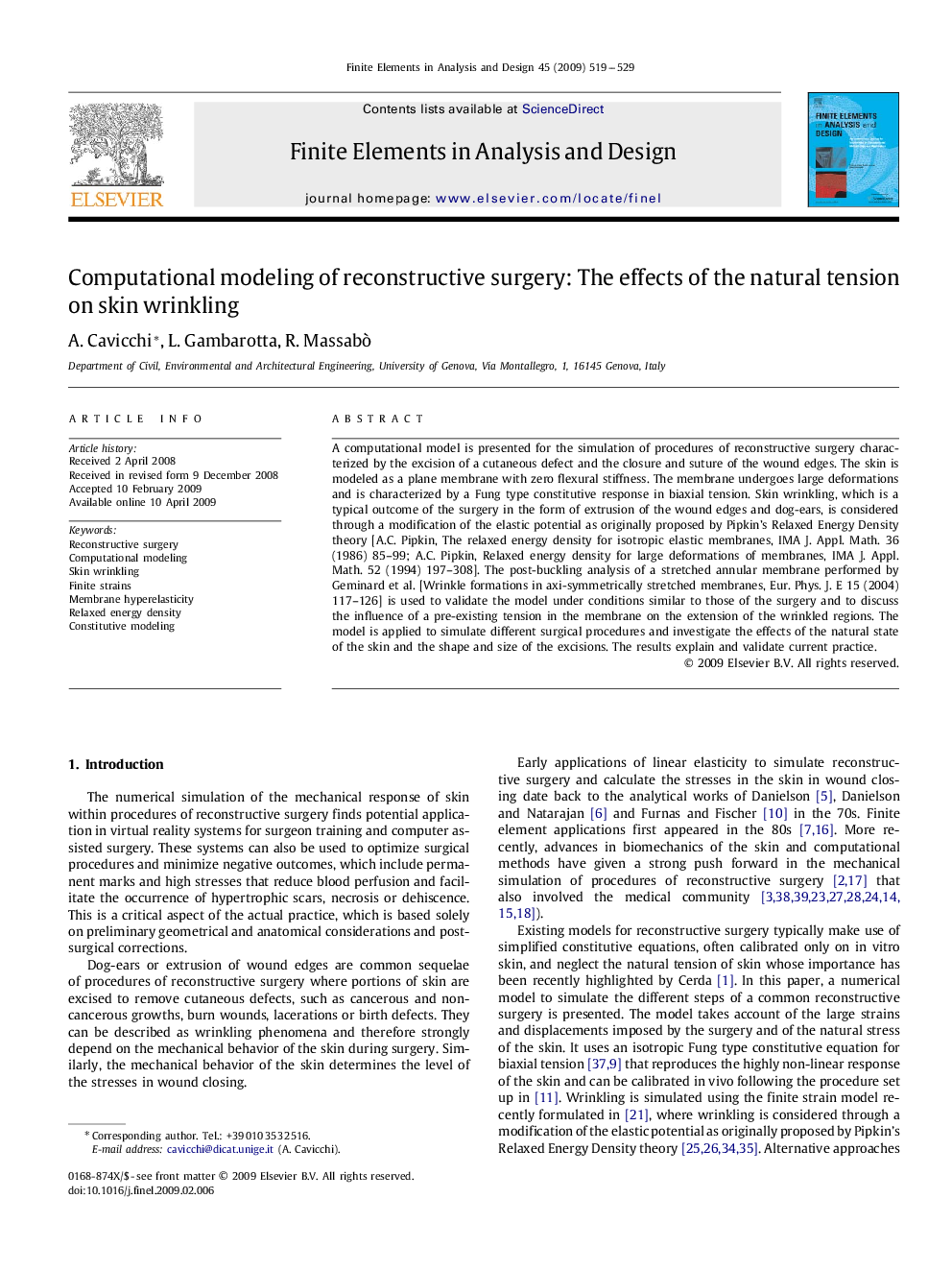| Article ID | Journal | Published Year | Pages | File Type |
|---|---|---|---|---|
| 514184 | Finite Elements in Analysis and Design | 2009 | 11 Pages |
A computational model is presented for the simulation of procedures of reconstructive surgery characterized by the excision of a cutaneous defect and the closure and suture of the wound edges. The skin is modeled as a plane membrane with zero flexural stiffness. The membrane undergoes large deformations and is characterized by a Fung type constitutive response in biaxial tension. Skin wrinkling, which is a typical outcome of the surgery in the form of extrusion of the wound edges and dog-ears, is considered through a modification of the elastic potential as originally proposed by Pipkin's Relaxed Energy Density theory [A.C. Pipkin, The relaxed energy density for isotropic elastic membranes, IMA J. Appl. Math. 36 (1986) 85–99; A.C. Pipkin, Relaxed energy density for large deformations of membranes, IMA J. Appl. Math. 52 (1994) 197–308]. The post-buckling analysis of a stretched annular membrane performed by Geminard et al. [Wrinkle formations in axi-symmetrically stretched membranes, Eur. Phys. J. E 15 (2004) 117–126] is used to validate the model under conditions similar to those of the surgery and to discuss the influence of a pre-existing tension in the membrane on the extension of the wrinkled regions. The model is applied to simulate different surgical procedures and investigate the effects of the natural state of the skin and the shape and size of the excisions. The results explain and validate current practice.
